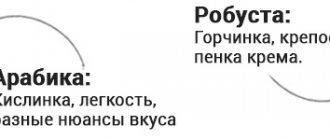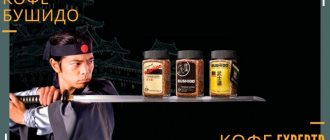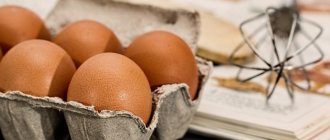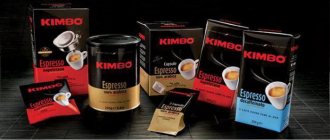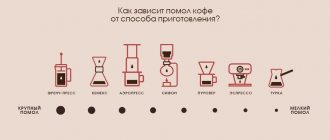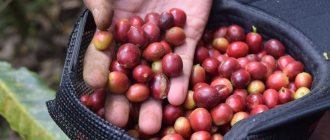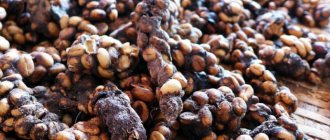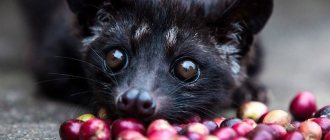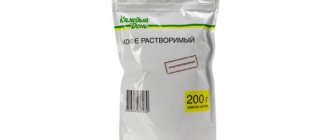Asian Luwak coffee is considered the most expensive due to the difficulty in obtaining the beans and the high quality of the finished drink. The grains must first pass through the digestive tract of palm martens, or musangs. The stomach juice of these mammals eliminates bitterness and contributes to the appearance of a chocolate flavor in the product.
Origin of Luwak coffee.
The Legend of Luwak and the History of the Origin of Coffee
Luwak production began in Sumatra. The colonialists imposed heavy taxes on coffee beans exported from the island. To avoid waste, local residents fed lemur-like animals, civets, with berries.
The grains then had to be washed out of their droppings. The taste of the drink changed. When producers noted this feature, a new variety was born, which quickly became expensive and elite.
According to legend, a peasant from the island of Sumatra was the first to extract grain from excrement. Palm martens, otherwise known as luwak, ate the entire coffee berry crop.
The peasant lived in poverty, so such an incident became a tragedy for him. He, however, noticed that the animals left behind feces in which whole coffee beans were visible. After thinking a little, the man began to remove the coffee from the excrement.
Producer followers
The island of Sumatra is not the only place where Luwak is produced. Suppliers of fermented grains also include Vietnam, the Philippines, and Indonesia. Production takes place in each palm civet habitat.
In Thailand, Black Tusk coffee is produced in a similar way. Instead of musangs, local residents feed the berries to elephants. To obtain a high quality drink, only Thai Arabica is used. The cost of a cup of coffee in some hotels is $50.
A ludicrous method of earning money
In our modern age, we have learned to make money from everything, not just from large and small production. The accessibility of the Internet has made it possible to make money even from pets. There would be a desire to sell everything completely, but there would always be a client.
Returning to the topic of pets, not all owners keep them out of spiritual kindness. Many people make money from them; you have often come across advertisements for the sale of puppies or kittens, a rare breed with an old pedigree. And how many similar scammers are there among the sellers?
The Internet has made it easier in almost everything to access information, communicate at a distance, and has also made it possible for fraudulent schemes to flourish unhindered. Therefore, when buying anything online, work only with proven websites to protect yourself.
The latest innovative method to improve your financial situation at the expense of your pet is keeping a Musang, or better yet, several. Ask who is this? Another name for it is Luwak, the animal that produces the most expensive coffee in the world, “Kopi Luwak”.
I'm sure you're wondering what the small animal has to do with coffee production? Let's start in order.
Who is Luwak?
The Musang is a small animal, dark grayish in color with thick and coarse fur, with dark stripes along the body. It loves warm tropical climates as it lives on palm trees. It has many titles:
- Malayan Marten;
- Palm civet.
But in most cases it is known in the world as Luwak.
The places where the animals live are:
- India;
- Indonesia;
- South China;
- Sri Lanka;
- Islands of Java and Borneo;
- Vietnam;
- South of the Philippines.
They settle on palm trees and do not form packs. They intersect with their relatives only during the mating period. Because males and females have scent glands in the form of testicles, it is sometimes said that these animals are hermaphrodites. For a long time, they were considered pests in their homeland.
Despite the fact that these mammals are omnivores, they eat a variety of foods:
- Various fruits;
- Small insects;
- The bats;
- Small birds and their eggs;
- Also worms;
- Small mice, like squirrels and their babies;
- Snakes;
- Lizards.
Luwak's favorite treat is coffee beans.
For some time they tried to exterminate them using all available methods. The fact is that the animals lead an active life at night, and they are quite difficult to catch. Making their way to coffee plantations, they choose only the tastiest and ripest beans. During the day the animal dozes, nestling in the interweaving of vines and small branches.
They were considered pests because they eat even more grains than they can digest, because most of them come out almost whole. But some enterprising original decided to use grains processed by the beast in a natural way. Having cleaned, washed and dried them, he made coffee; the taste amazed him so much that he decided to share it with others.
Unfortunately, it is not clear who turned out to be this original. The main thing is that, having tried this coffee, gourmets found it the best. The coffee taste is reminiscent of vanilla and chocolate, and at the same time it is not bitter.
In addition to producing an expensive variety of extraordinary coffee, musangs bring other benefits to people. By settling near people, in stables and other outbuildings, they help get rid of small rodent pests. So these are completely pleasant neighbors, and also with the opportunity to earn money from them.
Scheme for the production of the most expensive coffee
How does this extraordinary taste of coffee come about? According to the observations of scientists, coffee beans, passing through the intestinal tract of luwaka, are processed by a special enzyme - “cebitin”. Thanks to it, the bitterness that is inherent in coffee goes away, leaving at the same time other special taste characteristics, plus vanilla complements it.
Under natural conditions, Luwak, or in Latin paradoxurus hermaphroditus, produces only a few kilograms of such coffee per year. So residents and producers put a lot of effort into painstakingly collecting the purchased product and sending it for further processing. That's why its price starts from 400 bucks to 1500.
Despite the fact that Kopi Luwak coffee is made in such an unusual way and may even be a disgusting method for many. Not enough people liked to follow the entire production and processing process.
Most people prefer not to think about where coffee comes from, but simply enjoy the extraordinary taste of the final product. Hence the great popularity of coffee only in the world. That’s why many coffee companies are trying to create it artificially.
There are entire Luwak farms in Asian countries.
Only an animal of the civet family living in captivity produces coffee that is not so fragrant and tasty. After all, the diet of an animal in captivity is different from usual; it eats what is given, without choosing the best, as in freedom.
The closest taste to wild coffee is Vietnamese coffee “Chon”. This is all thanks to the technology of manual selection of coffee beans; only the best are fed to the martens.
Some manufacturers tried to recreate the rarest coffee in the laboratory, but nothing came of it. Synthetically processed civet, in the end, did not give a suitable result. Most likely, coffee is also influenced by other enzymes found in the intestinal tract of the little marten.
An extraordinary "producer"
Wikipedia gives a detailed description of the life of the beast. And below you can see a photo of this cute creation. Luwak is quickly tamed, even living with people, on roofs or near growing trees. And don’t necessarily put him in a cage.
We earn thousands of dollars with the help of an exotic animal
In the near future, breeding Luwak is becoming popular; many entrepreneurs earn hundreds of thousands from coffee martens. In terms of content, this is not a whimsical creature, and is an omnivore. Although he chooses only the best from food.
But if you want to ultimately get the best coffee, then you should create conditions that are closest to natural wild nature, then demand will only increase.
The best part is that breeding musangs is quite simple; the females have a short pregnancy of only two months and it produces from 2 to 4 cubs. Therefore, it will be easy to develop a comprehensive creation of exotic coffee. But if you want to have no equal in your own production, make more efforts to create comfortable living conditions for palm martens.
Fascinating story
And now it's time for history. Now I would like to share the sad experience of one of my friends. She loves animals very much, especially exotic ones. Naturally, they are the rarest and so cute. But in my opinion, it’s better to keep an eye on them from afar.
After all, living in different weather conditions, their body is structured differently, and it’s not clear what viruses they carry. But legally obtaining permission to import such an animal is quite difficult. So many certificates and permits need to be collected that in the end many simply give up on the idea of owning such an animal.
That's why the smuggling business is so booming. People don’t understand that getting a crocodile without knowing how to keep it can lead to a lot of problems. A friend of mine encountered exactly the same problems when she decided to bypass the law and purchase an exotic cat, or, to be more precise, a “Velvet Feral Cat.”
But they brought her a completely different animal. Instead of the chosen little cat, she was given a “Bornean cat”, it turned out later. In general, she paid a decent amount of money for this fluffy magic.
Difficulties began almost a couple of days later
They didn’t really explain to her how to care for her, and on the Internet she found information about a completely different type of cat. Well, no one explained to her that both the owner and the animal need to be vaccinated against various diseases, most of which are transmitted through a bite or a cut from the claws.
Believe me, feral cats are different from domestic cats, especially those that were taken against their will from their normal environment and were not tamed to people. So my friend suffered from her own lack of information.
This story ended quite sadly, firstly, the animal fell ill due to improper care. Secondly, his owner became seriously ill with a high fever due to a cut on her arm left by a feral cat.
Naturally, both were able to be cured, but after being discharged from the clinic, my friend was dragged for a long time to various authorities and fined a severe amount for illegally importing an animal.
Characteristics of the drink
The drink made from grain that has passed through the stomach of an animal is very different from other types of coffee.
Taste characteristics
There is no bitterness characteristic of classic coffee, and there is no sourness either. The taste is soft, creamy chocolate. The drink smells like cocoa and caramel.
Differences from regular Arabica
Due to the peculiarities of obtaining raw materials, Luwak coffee has a lower strength than Arabica coffee. Its taste is less tart and has a greater number of shades. The cost of Luwak is several times higher than the price of Arabica. Because of this, the elite variety of coffee is even called the “drink of the gods.”
Effect on the human body
Thanks to the caffeine contained in coffee, activity increases and a person feels alert. Drinking 1 cup allows you to increase your performance by 10-12%.
Brain activity is stimulated. The weight loss process accelerates. Caffeine helps break down fat cells.
In addition, luwak eliminates cravings for high-calorie foods. The drink strengthens the immune system, prevents the development of inflammatory processes, and increases resistance to infections.
Coffee strengthens the immune system.
Luxury born of poverty
The birthplace of the first “Luwak” is called the island of Sumatra, although Java, Bali, Sulawesi, and all the islands of the Malay Archipelago could lay claim to the palm. From the 16th century until the second half of the 20th century, Indonesia was a Dutch colony with increasingly harsh taxes year after year. And the colonialists collected these taxes, including in coffee equivalent. Therefore, every grain of coffee was valued, and raids by animals wanting to eat ripe berries were considered a disaster.
Luwak, musang or palm marten - a small animal, the size of a cat, with a tail the same length as the body and light stripes on a cunning muzzle, more often than others became the cause of such disasters. During the day the animal sleeps, and at night it comes out to “have fun”: the luwak’s favorite delicacies are ripe coffee berries and fermented palm juice, which is why the animal is also called the “punch cat”. Having eaten enough coffee berries, the night thief marks the territory with excrement, which consists almost entirely of seeds - coffee beans. And the Indonesian islanders were forced to collect these consequences of life activity, wash the grains and fry them in order to pay the colonialist rent.
Palm marten (luwak) - “producer” of an elite variety of coffee
How quickly they decided to try the grains washed from the droppings themselves is unknown. But they clearly did this not to sybaritize in search of new sensations, but for the sake of a sip of an invigorating drink, which made it possible to survive, work, and feed their family. And then the workers were surprised to discover that the coffee extracted from musang excrement was softer, more aromatic and tastier than usual.
The aborigines did not immediately begin to share their new experience with the conquerors. But when the colonial era came to an end after World War II, and the coffee industry was going through difficult times due to crop failures, enterprising Sumatrans introduced this product to the world market.
The success exceeded all expectations. And the proceeds are still amazing: a serving of coffee can cost up to ten dollars. True, in a year you can get only 250-270 kilograms of real Kopi Luwak, which is explained by the seasonality of production and the limited number of animals involved in its production.
Nuances of production in different countries
The coffee production process differs depending on the country.
Indonesia
Indonesian farmers search the area early in the morning, before the sun has yet to warm the ground, to find the freshest wild animal droppings. Immediately after discovery, they contact the buyer, who inspects the excrement and determines whether the grain meets the standards.
Once the coffee arrives at the facility, it is immediately washed and the water is left for analysis to determine whether the feces came from a wild civet or a caged civet.
Vietnam
In Vietnam, the quality of luwak is worse than in Indonesia. Civets on farms are fed not only selected coffee berries. The animals' diet is very different from their natural diet, which affects the taste of the fermented grain.
In addition, under the guise of luwak, they often sell a mixture of coffee that has passed through the digestive system of musangs with robusta and arabica. The concentration of fermented grain can be 1-5% of the total mass.
Feeding animals.
Philippines
The production of luwak is carried out by the inhabitants of the southern part of the Philippines. Animals that eat coffee berries prefer to settle near the mountains. Local residents inspect the forest area every morning to find feces of wild civets.
The number of animals, however, is rapidly declining due to the use of civet produced by martens in perfumery.
Start of commercialization
One of the rules of marketing is the so-called ability to turn a disadvantage into an advantage. This is exactly what happened next.
Kopi Luwak quickly attracted the attention of the colony's administrators.
It was widely believed that the coffee tasted milder than regular coffee.
For the record, when someone uses adjectives like “smooth” or “strong” to describe coffee, it will most often be a sure sign that they don’t understand anything about it.
Due to the limited supply of Kopi Luwak, it could fetch more money when exported. Yet the coffee trade did not become a big business, and as large-scale commercial coffee production began to develop in regions other than Indonesia, interest in Kopi Luwak waned.
But then something big happened in 2007: Kopi Luwak was mentioned in the movie Before He Played It Off, starring Jack Nicholson and Morgan Freeman.
Interest in it has increased again, and resourceful entrepreneurs hastened to take advantage of this craze. Overnight, coffees with Kopi Luwak on the label began appearing in Southeast Asia, even though they were nowhere near cat droppings.
With good advertising, terrible Robusta can be sold for huge sums of money to some naive tourists who will believe that they bought the best coffee in the world.
But that wasn't the worst thing. It turns out that some farmers in poor Asian coffee-producing countries have suddenly started capturing martens and force-feeding them coffee berries.
Animals that ferment coffee
In addition to musangs, elephants can ferment coffee. The animals' diet includes vegetables, fruits, and sugar cane. Veterinarians ensure that the concentration of caffeine in the blood of animals does not exceed the norm.
Brazilians obtain fermented grains with the help of gray parrots. The birds' diet includes local fruits and nuts. Residents of South America prefer to create conditions close to natural for their parrots, so the taste and smell of coffee from the farm is almost no different from wild coffee.
Fermentation of grains can occur in the digestive system of some species of monkeys. Coffee varieties derived from primates are considered less elite than Luwak.
Processing disputes
At that time, the standards for harvesting and processing coffee beans were nowhere near what we have today.
When harvesting coffee, it is very important that the berries are completely ripe . As with other fruits, this ensures that your sugar levels reach their peak.
The animals prefer ripe berries, which suggests that in the wild the palm marten would be more selective than the workers of the Dutch plantations. But this is just a guess.
The process of processing coffee, at its core, is to remove the pulp from the berries before they begin to rot.
As a matter of fact, this happens in the animal’s stomach within 30 hours.
It is quite possible that this combination of careful selection of berries and efficient processing of coffee beans from the pulp made this coffee the best available at that time. However, it is worth remembering that the accepted processing standards back then could not compare with those now used by specialty coffee producers.
Varietal varieties
In addition to the classic Copi Luwak, gourmets can try other varieties of the expensive drink.
Black Ivory
Black tusk is processed in the stomachs of elephants. The cost of 1 kg of grain starts at $1,080, and for a cup you will have to pay at least $50.
This variety is not available for sale; it can only be purchased in the Anantara Nature Reserve. Only a few expensive Thai hotels offer the finished drink to guests.
Elite Black Ivory coffee.
Jacques Bird
This Brazilian variety is fermented in the digestive system of Gray parrots. The living conditions of birds on farms are as close to natural as possible; there are no cages.
Freshly roasted coffee is characterized by the aroma of dried black bread with notes of molasses. There is a fruity aftertaste. The price of 1 kg of coffee starts from $430.
Brazilian variety Jacquou Bird.
Coffee Terra Nera
Palm civets are used to produce this variety. Ready, freshly roasted coffee smells of hazelnuts and cocoa. Due to the small volume of production, the cost of the product increases to $1,500 per 1 kg.
The beans are sold only in a single coffee shop in London.
Luxury products are packaged in silver paper with a flap to preserve the aroma. The pack is supplied with a 24-karat gold tag, on which the client’s name can be engraved if desired.
Golden Coffee Terra Nera.
Why is Kopi Luwak so expensive?
Most people think that the high cost of Luwak coffee is only due to the fact that local farmers have to rummage through animal feces. This work is not the most pleasant, but the reason for the high price lies not there.
Farmers look for processed material exclusively in the excrement of wild animals, since musangs do not want to eat coffee beans, being unwitting. The secret of the high cost of the product is explained as follows:
- the most mature grains are collected exclusively by hand;
- two or three times a week the Luwak are given about 200 grams of coffee beans, on other days they are fed noodle soup and chicken, meat with rice, bananas and corn;
- animals are considered to be very selective, choosing exclusively ripe fruits;
- Musangs are regularly examined by a veterinarian, who carefully monitors their health.
Real Luwak coffee has a spicy taste with light notes of chocolate and caramel. The most expensive drink in the world costs about $600 per kilogram, the price for the most expensive Vietnamese version of coffee can reach up to $6,600 per kilogram.
Watch another video about musang.
Rules for preparing the drink
Recipes for making the drink differ depending on the country. Be sure to use purified cold water. Liquid at room temperature is not suitable, since the taste of the drink is not revealed when used. Do not cook luwak in hard tap water, replace it with filtered or bottled water.
With spices
Pour 1 clove star into the cezve, 5 pcs. cardamom, 0.5 tsp. ground ginger. Add 3 tsp. pre-ground coffee beans.
Pour 250 ml of cold water, then place the Turk over low heat. Wait until the foam rises, remove the cezve from the stove. Repeat twice more, then strain the drink.
Coffee with cardamom.
In Turk
Preheat the Turk. Then add 2 tsp. crushed grains, add 1-2 tsp if desired. granulated sugar. Warm the mixture slightly, then add cold water. Cook over low heat until foam rises. Then remove the Turk from the stove and pour the coffee into cups.
Flavored coffee.
In Vietnamese
To make Vietnamese coffee you will need a special filter press. Place the device over the cup, fill 2-3 tsp. ground coffee.
The coffee powder is compacted and then poured with a portion of water. After 0.5 minutes, add a little more liquid. Then they wait until the water has completely flowed into the cup and drink immediately. To get warm coffee, it is recommended to first place the mug in a container of hot water.
Vietnamese coffee.
All Vietnamese coffee is flavored
What is traditional Vietnamese coffee? Not at all the one aimed at the European coffee market. The Vietnamese are traditionally accustomed to a more interesting taste of coffee. The Vietnamese boldly experiment with blends of different types of coffee, a combination of different levels of roasting, and some farmers add natural ingredients for themselves when roasting coffee, which can make the taste and aroma of coffee unique. Of course, when we hear the word “flavor,” we involuntarily have associations with something harmful, chemical, and detrimental to health. But this is not always the case, because natural products can also flavor coffee. Again, this only applies to real, proven and natural coffee without GMOs and chemicals, be it Vietnamese coffee or Luwak coffee from Vietnam.
What additional natural products can flavor Vietnamese coffee? Vietnamese producers can add natural molasses to coffee, which is most often listed as maltodextrin, wine, salt, caramel, coconut oil, cane sugar, and so on. At the same time, legislation strictly regulates the need to indicate the composition of absolutely all ingredients used in the production of coffee. But at the same time, Vietnam produces coffee without natural flavors. Vietnamese coffee acquires an original aroma due to climatic conditions, the degree and type of roasting of coffee beans and their varieties. Therefore, the statement that all Vietnamese coffee, in particular Vietnamese Luwak coffee, is exclusively flavored and devoid of naturalness is also a myth, which, unfortunately, can still exist and be passed on by rumors. But fortunately, this is just a coffee myth, which is difficult to correlate with real Vietnamese coffee and natural Luwak coffee from Vietnam.
Criterias of choice
When choosing grains, consider a number of criteria:
- There should be no glossy shine. This feature indicates roasting using palm oil. Sometimes shine occurs due to too rapid heat treatment. This is beneficial for the manufacturer because it saves time. The taste of the product, however, deteriorates.
- Take a closer look at the grains. The packaging must not be broken or damaged. If the grains of one blend differ in size, it is better to refrain from purchasing.
- A price that is too low indicates a fake. Luwak coffee costs from $200 per 100 g; it is not profitable for the manufacturer to sell the product cheaper.
- Flavorings are not allowed. Their use indicates low grain quality.
Some nice statistics
Vietnam ranks first in the world in coffee production. Yes, leading Brazil is now in second position. Where did the Vietnamese get this wonderful drink? Like the love for baguette, from the French. It was they who first brought coffee beans to the country in 1857.
And today the Vietnamese simply love coffee. By the way, tourists are also not far behind them and are happy to start their day with a cup of iced coffee. Yes, yes, cold. Do not be surprised! This is one of the local features. Be sure to try it! There are two main varieties of coffee beans in Vietnam: Robusta and Arabica. Robusta is more popular, but both varieties are often mixed together in different proportions. And each manufacturer has its own secrets, ranging from the degree of roasting to the addition of various special ingredients.
Now let's move on to the legendary luwak variety (from the English “luwak”).
What causes the high cost of Luwak coffee?
The cost of production is high for 3 reasons:
- Small production volume. The mass of grains in the feces of the palm marten is small. Making “wild” coffee is further complicated by the need to search for excrement in the forests where the musangs live.
- Palm civets produce civetin, a substance necessary for processing grains in the digestive tract, for only 6 months of the year. At other times, the farms are idle and no drink is produced. Often animals are released into the wild during this period so as not to spend money on their maintenance.
- Musangs do not breed in captivity, so farmers have to regularly catch new individuals in the forests.
Musangs do not have offspring in captivity.
The process of making the world's most expensive coffee: the secret is in the intestines
Kopi Luwak or musang (palm marten) is a story in Southeast Asia. The peculiarity of this animal lies in the ability of gastric juice to break down proteins and give the future drink a special taste with a hint of bitterness. The animal literally shits the finished product.
The coffee beans pass through the Luwak's digestive tract and stomach virtually intact. The secret that musang holds is the fermentation process, during which a certain amount of grains is digested and not only the taste, but also the aroma of the product obtained from animal feces is enhanced.
Interesting Facts
The legend about the origin of this type of coffee is funny and educational, but there are many more interesting facts about this extraordinary drink:
- Kopi Luwak is often criticized by environmentalists. Coffee berries are not the basis of the diet of martens; excess caffeine has a negative effect on the animal’s body. In addition, on farms the animal is often kept in poor conditions.
- In captivity, the musang eats approximately 1 kg of berries daily. A daily portion of excrement contains no more than 60-70 g of grains.
- Every year, only about 300 kg of Kopi Luwak enters the world market. Most lovers of expensive coffee are in the UK, Hong Kong, and Japan.
- In Vietnam, luwak is traditionally served over ice. If desired, condensed milk can be added to the drink. Additionally, a cup of green tea is served.
How to make coffee from litter
Unlike Europeans, Indonesians do not use coffee machines and Turks to prepare the drink. Coffee powder is brewed like tea in a teapot or heated ceramic cup, and coarsely ground beans are brewed in a French press.
For 1 serving you will need 8 g of ground coffee and 160 ml of water at 80 °C. The drink is considered ready after 3 minutes, when the grounds settle to the bottom. In Vietnam, Chon is prepared differently.
Method No. 1
A little condensed milk is poured into a cup. A filter is installed on top, into which 10 g of fine or medium-ground grains are poured. The powder is pressed with a press and 100 ml of boiling water is poured.
Method No. 2
In hot weather, the Vietnamese prefer to drink a cold drink. To prepare it, you will need a tall glass with ice instead of a cup of condensed milk, a filter with a press, 10 g of Chon and 100 ml of hot water. The cooking technology is the same as in the first case.
In Vietnam, it is customary to serve green tea in addition to fermented coffee.
.
Geyser coffee makers and Italian coffee machines are not suitable for preparing an expensive drink. Trying to make a cappuccino or latte is a fool's errand. To experience the complex bouquet of flavors and preserve the beneficial qualities, simple Asian cooking methods are used.
